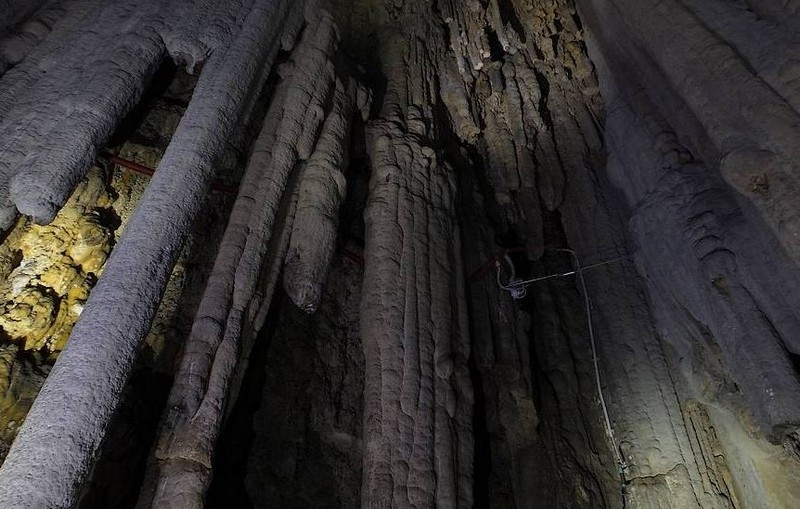The landscape of Pale was shaped by the action of the water which furrowed through the imposing limestone rocks (Formation of the Massive Limestone) but also generated cavities, gorges, cascades and lakes. In addition to digging, the waters of the Menotre river also accumulated impressive travertine deposits, penetrated the fractures of the limestone and encrusted the cavities, creating underground worlds: one of these is located under Piazza Elisei, and is known as the Cave of Pale or Cave of the Abbadessa.
The cave consists of a larger cavity and other cavities of modest size, enriched by imposing stalactites that are welded with stalagmites forming columns up to 8 meters high. The importance of the cave is not only aesthetic: both geological and biological historical events are here recorded, for example the way the endemic beetles adapted to the underground life.
The Palace of the Elisei family once opened onto the square and extended towards the current Altolina Waterfall Park.

Il progetto Divina Foligno è sviluppato nell’ambito del “programma Agenda urbana di Foligno Smart community - Comunità, Sostenibilità – Foligno 2020” intervento OT.6 INT_01 “Realizzazione della rete di attrattori culturali attraverso la realizzazione di itinerari culturali e tematici

The Divina Foligno project is promoted and financed as part of the "Urban Agenda of Foligno Smart community - Community, Sustainability - Foligno 2020 program" intervention OT.6 INT_01 "Creation of a network of cultural attractions through the creation of cultural and thematic itineraries"

Copyright © 2022 Landmark. All rights reserved.






